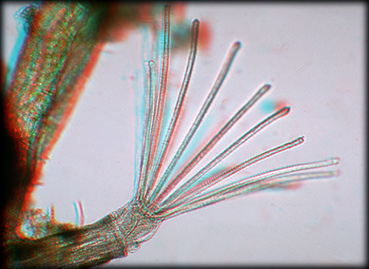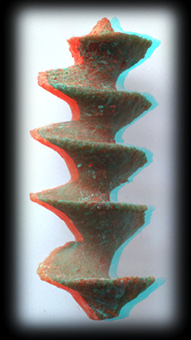| A stereoscopic image of this marine bryozoan (or moss animalcule) clearly shows the crown of tentacles, the Lophophore. Along each of the tentacles run rows of cilia. With these the creature can sweep in food particles. The tentacles can be withdrawn inside the protective tube. Bryozoans grow colonies. Some are branching, others form mat-like structures. |
|
|
|
||
| Bryozoans were also abundant in ancient seas.This fossil colony of bryozoans is called Archimedes because of it's remarkable screw shaped appearance. The colony is built by the less than one millimetre individual organisms.The fossil is about 2 centimetres high. It lived in the Carboniferous period, about 300 million years ago. | ||

